Terminalia Chebula provides protection against dual modes of necroptotic and apoptotic cell death upon death receptor ligation
- PMID: 27117478
- PMCID: PMC4846877
- DOI: 10.1038/srep25094
Terminalia Chebula provides protection against dual modes of necroptotic and apoptotic cell death upon death receptor ligation
Abstract
Death receptor (DR) ligation elicits two different modes of cell death (necroptosis and apoptosis) depending on the cellular context. By screening a plant extract library from cells undergoing necroptosis or apoptosis, we identified a water extract of Terminalia chebula (WETC) as a novel and potent dual inhibitor of DR-mediated cell death. Investigation of the underlying mechanisms of its anti-necroptotic and anti-apoptotic action revealed that WETC or its constituents (e.g., gallic acid) protected against tumor necrosis factor-induced necroptosis via the suppression of TNF-induced ROS without affecting the upstream signaling events. Surprisingly, WETC also provided protection against DR-mediated apoptosis by inhibition of the caspase cascade. Furthermore, it activated the autophagy pathway via suppression of mTOR. Of the WETC constituents, punicalagin and geraniin appeared to possess the most potent anti-apoptotic and autophagy activation effect. Importantly, blockage of autophagy with pharmacological inhibitors or genetic silencing of Atg5 selectively abolished the anti-apoptotic function of WETC. These results suggest that WETC protects against dual modes of cell death upon DR ligation. Therefore, WETC might serve as a potential treatment for diseases characterized by aberrantly sensitized apoptotic or non-apoptotic signaling cascades.
Figures

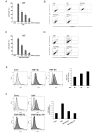

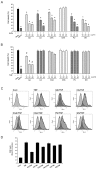
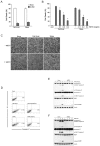
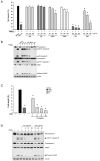
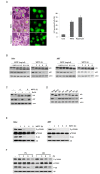
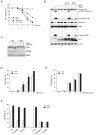
Similar articles
-
Anti-HSV-2 activity of Terminalia chebula Retz extract and its constituents, chebulagic and chebulinic acids.BMC Complement Altern Med. 2017 Feb 14;17(1):110. doi: 10.1186/s12906-017-1620-8. BMC Complement Altern Med. 2017. PMID: 28196487 Free PMC article.
-
Chebulinic acid attenuates glutamate-induced HT22 cell death by inhibiting oxidative stress, calcium influx and MAPKs phosphorylation.Bioorg Med Chem Lett. 2018 Feb 1;28(3):249-253. doi: 10.1016/j.bmcl.2017.12.062. Epub 2017 Dec 29. Bioorg Med Chem Lett. 2018. PMID: 29317168
-
Biological activities of phenolic compounds isolated from galls of Terminalia chebula Retz. (Combretaceae).Nat Prod Res. 2010 Dec;24(20):1915-26. doi: 10.1080/14786419.2010.488631. Nat Prod Res. 2010. PMID: 21108118
-
Crosstalk between apoptosis, necrosis and autophagy.Biochim Biophys Acta. 2013 Dec;1833(12):3448-3459. doi: 10.1016/j.bbamcr.2013.06.001. Epub 2013 Jun 13. Biochim Biophys Acta. 2013. PMID: 23770045 Review.
-
Regulation of necroptosis signaling and cell death by reactive oxygen species.Biol Chem. 2016 Jul 1;397(7):657-60. doi: 10.1515/hsz-2016-0102. Biol Chem. 2016. PMID: 26918269 Review.
Cited by
-
Vitis vinifera polyphenols from seedless black fruit act synergistically to suppress hepatotoxicity by targeting necroptosis and pro-fibrotic mediators.Sci Rep. 2020 Feb 12;10(1):2452. doi: 10.1038/s41598-020-59489-z. Sci Rep. 2020. PMID: 32051531 Free PMC article.
-
Plants of the Genus Terminalia: An Insight on Its Biological Potentials, Pre-Clinical and Clinical Studies.Front Pharmacol. 2020 Oct 8;11:561248. doi: 10.3389/fphar.2020.561248. eCollection 2020. Front Pharmacol. 2020. PMID: 33132909 Free PMC article. Review.
-
Nootropic and Anti-Alzheimer's Actions of Medicinal Plants: Molecular Insight into Therapeutic Potential to Alleviate Alzheimer's Neuropathology.Mol Neurobiol. 2019 Jul;56(7):4925-4944. doi: 10.1007/s12035-018-1420-2. Epub 2018 Nov 9. Mol Neurobiol. 2019. PMID: 30414087 Review.
-
A systems pharmacology approach to identify the autophagy-inducing effects of Traditional Persian medicinal plants.Sci Rep. 2021 Jan 11;11(1):336. doi: 10.1038/s41598-020-79472-y. Sci Rep. 2021. PMID: 33431946 Free PMC article.
-
Randomized Double-Blind Placebo-Controlled Supplementation with Standardized Terminalia chebula Fruit Extracts Reduces Facial Sebum Excretion, Erythema, and Wrinkle Severity.J Clin Med. 2023 Feb 17;12(4):1591. doi: 10.3390/jcm12041591. J Clin Med. 2023. PMID: 36836126 Free PMC article.
References
-
- Baud V. & Karin M. Signal transduction by tumor necrosis factor and its relatives. Trends Cell Biol 11, 372–377 (2001). - PubMed
-
- Wallach D. Cell death induction by TNF: a matter of self control. Trends Biochem Sci 22, 107–109 (1997). - PubMed
-
- Pennarun B. et al. Playing the DISC: turning on TRAIL death receptor-mediated apoptosis in cancer. Biochim Biophys Acta 1805, 123–140 (2010). - PubMed
-
- Gaur U. & Aggarwal B. B. Regulation of proliferation, survival and apoptosis by members of the TNF superfamily. Biochem Pharmacol 66, 1403–1408 (2003). - PubMed
Publication types
MeSH terms
Substances
LinkOut - more resources
Full Text Sources
Other Literature Sources
Miscellaneous

